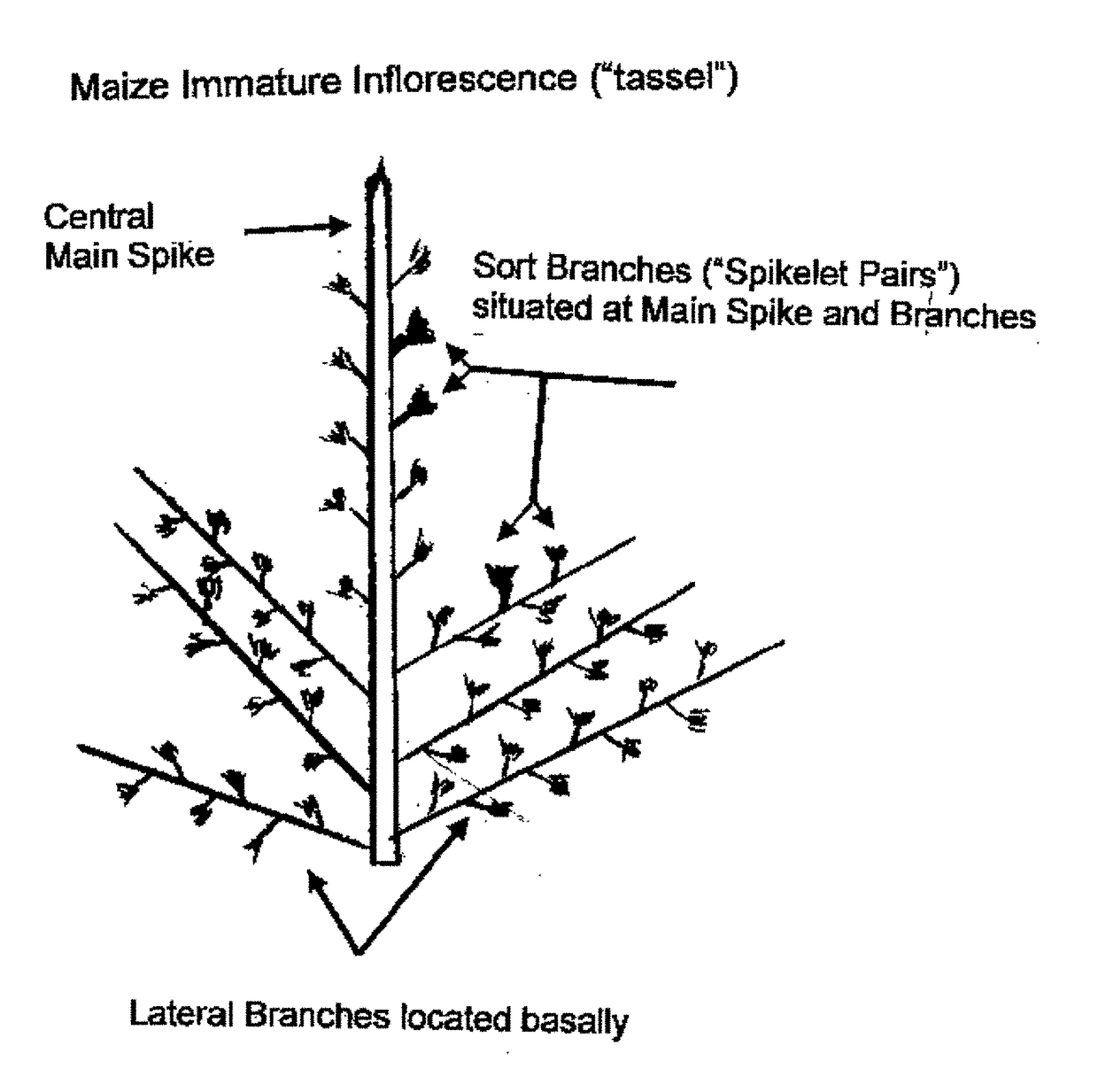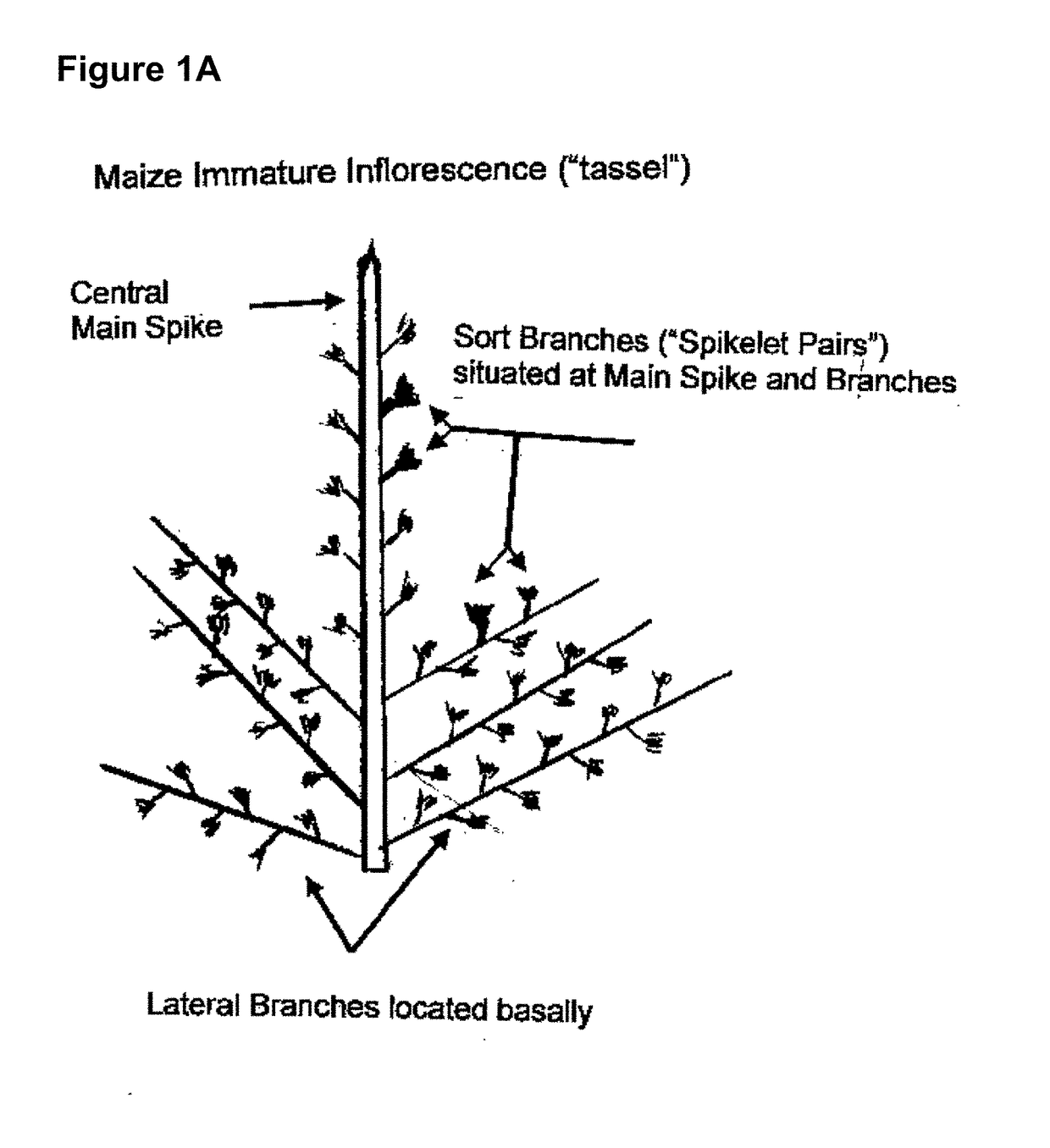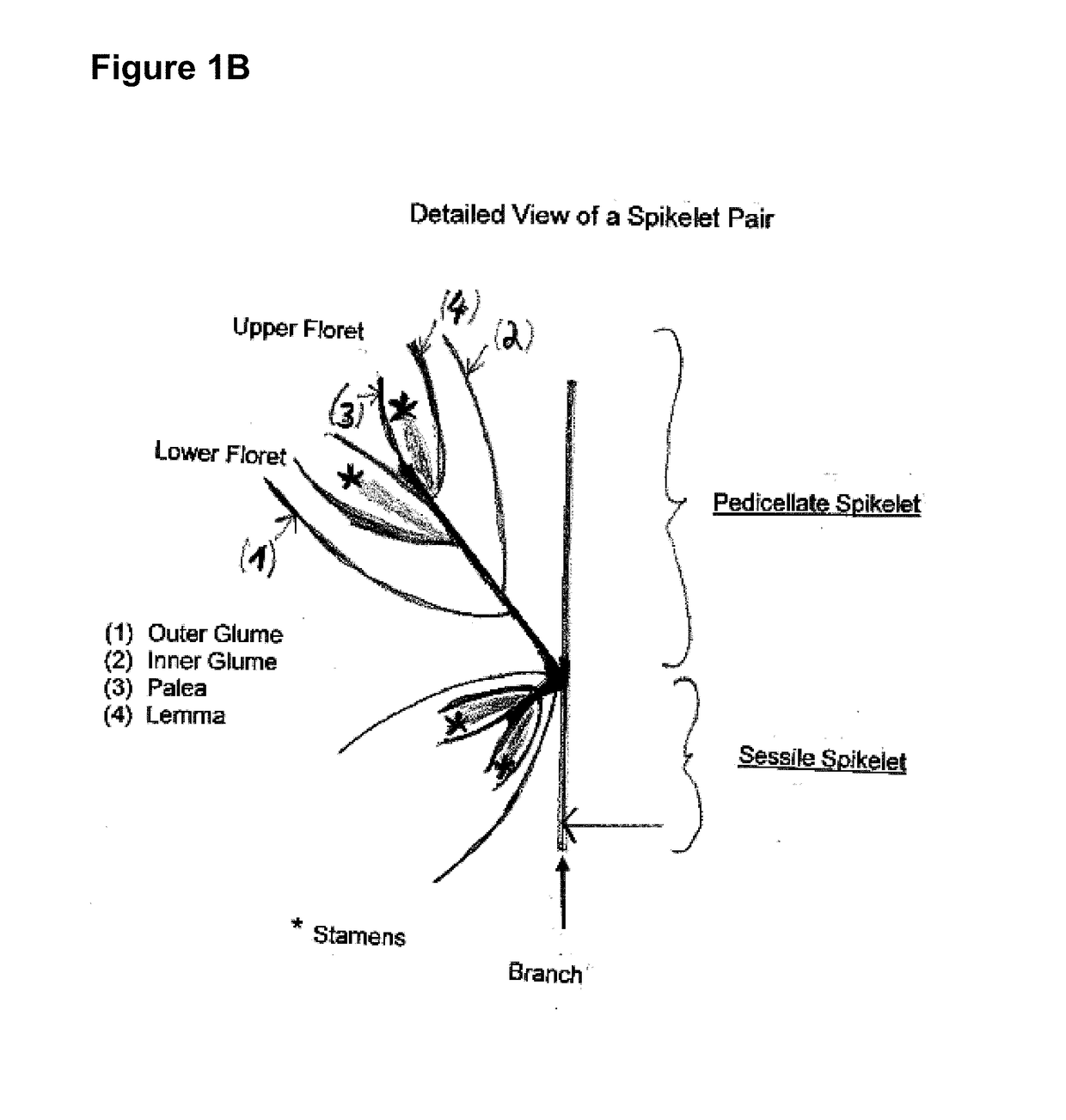Methods for the in planta transformation of plants and manufacturing processes and products based and obtainable thereform
a technology of planta and manufacturing process, applied in the field of in vitro planta transformation methods for plants or plant materials with a genetic construct, can solve the problems of time-consuming, expensive, elite varieties, time-consuming and costly, and the process of regenerating plants from in vitro transformed materials is time-consuming and expensive, so as to achieve stable introduction/integration, versatile and efficient
- Summary
- Abstract
- Description
- Claims
- Application Information
AI Technical Summary
Benefits of technology
Problems solved by technology
Method used
Image
Examples
example 1
sel Development
[0148]In corn development, the apical meristem differentiates into tassel primordia in the V6 stage (“Vegetative stage 6” or when the plant has 6 leaves) or 25-30 days after germination (Cheng et al. 1983; Abendroth et al. 2011). Therefore, it was tried to target the cells of those immature tassels that will further develop in the anther tissue that will produce pollen. One set of experiments focused on maize plant, namely A188 plants. Already 1 month old plants have developing tassels instead of the classical apical meristems in these plants see (FIGS. 3 and 4). It was observed that the growth of the immature tassel is very fast, going from less than 1 cm to more than 8 in 11 days (FIG. 4). We also looked at the developmental stage of the spikelets and decided that the target age will be between 34 and 37 days after sowing, when the tassel is easy to be detected and exposed but the spikelets are not formed (FIG. 4). This is an important parameter, in case the immatur...
example 2
the Immature Inflorescence of a Growing Maize Plant
[0149]To facilitate the genetic manipulation or the introduction of a genetic construct into the maturing tassel tissue, several methods were analyzed. It was found that a window could artificially be introduced into the region, where the meristematic tissue of the immature inflorescence is located. For maize, this region is located near the axil in the shoot axis, the culm, of the plant. An exemplary plant comprising an artificially introduced window is shown in FIG. 5. The tassel is pushed upwards very fast during plant development. When the tassel is exposed through a window, the natural pathway to grow upwards is disrupted. Sometimes the tassel grows out of the plant or other is trapped between the growing leaf mass, making the plants look abnormal in comparison to a non treated plant (see e.g. FIG. 7 (D to E)), which, however, did not disturb the overall plant and tassel development. For a maize plant, it is thus recommendable ...
example 3
Transformation of Exposed Immature Tassel with Particle Bombardment In Vitro
[0151]One of the questions to be answered by this technology was if the exposed immature tassel tissue is amenable for transformation, especially in planta, but also ex vivo. For that, several experiments were conducted in which the immature tassel was separated from the plant and bombarded in the lab using the bench gene-gun PDS-1000 / He (BIO-RAD). Particle bombardment turned out to be a suitable method for all experiments conducted with immature meristematic tissues and isolated cells from several plants including maize, barley and wheat varieties for both in vitro as well as in planta bombardment. Experiments with several test constructs of dsDNA, RNA and proteins as well as virus particles were used in the different settings. During this series of experiments it turned out that the parameters for bombardment are critical to influence, whether a transient or stable expression of a dsDNA construct will be a...
PUM
| Property | Measurement | Unit |
|---|---|---|
| velocity | aaaaa | aaaaa |
| radius | aaaaa | aaaaa |
| radius | aaaaa | aaaaa |
Abstract
Description
Claims
Application Information
 Login to View More
Login to View More - R&D
- Intellectual Property
- Life Sciences
- Materials
- Tech Scout
- Unparalleled Data Quality
- Higher Quality Content
- 60% Fewer Hallucinations
Browse by: Latest US Patents, China's latest patents, Technical Efficacy Thesaurus, Application Domain, Technology Topic, Popular Technical Reports.
© 2025 PatSnap. All rights reserved.Legal|Privacy policy|Modern Slavery Act Transparency Statement|Sitemap|About US| Contact US: help@patsnap.com



